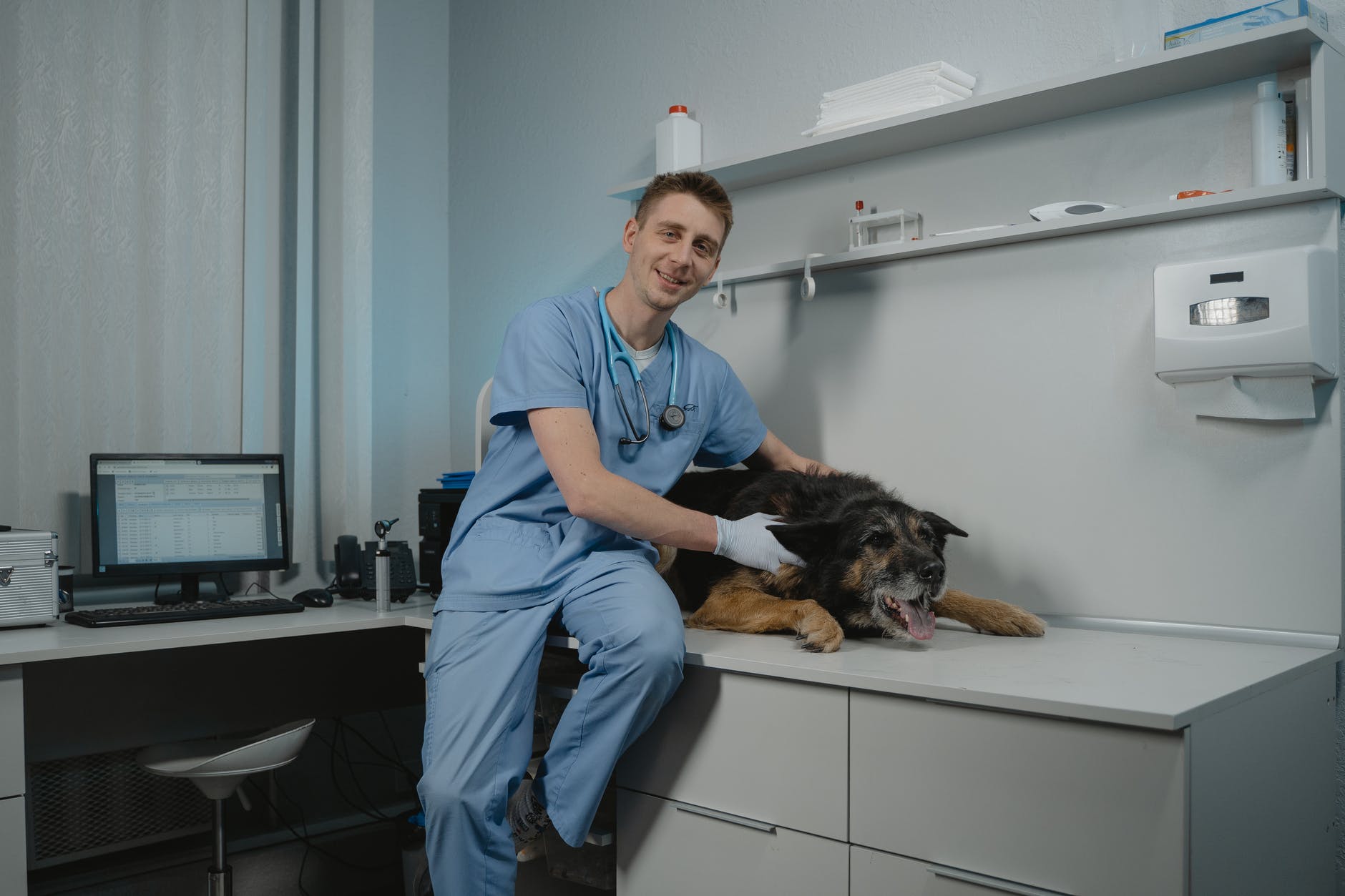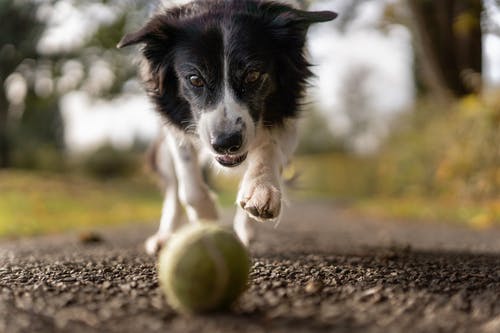
15, Aug 2022
Dog Socialization: Vital Tips for Your Pet
The importance of socialization in dog training and developing a well-behaved dog cannot be overstated. A socialized dog will lead to a peaceful and secure life from puppyhood to maturity.
Socializing your dog trains it to live a tranquil life as a pet in the world of humans by offering it pleasant, enjoyable experiences that are stress-free. Dog socialization exposes your puppy or adult dog to various animals, people, environments, scents, sounds, sights, and smells.
Thanks to socialization, your dog will have the best time and be a more comfortable life. Unsocialized dogs typically suffer from anxiety and hostility due to their fear of unfamiliar surroundings, while socialized dogs are affectionate to all pets and humans.
How to Socialize Your Dog
You’ll benefit from spending time with your dog as you don’t need to worry about exhibiting negative behavior in everyday circumstances. Because you’re confident that your dog can handle particular circumstances, you’ll feel confident letting them run free at the dog park or on your feet in the coffee shop.
Start Young
Every new dog, regardless of age, might socialize; however, the puppy of a new breed is more straightforward to mix than an adult dog. The reason is that puppies are more adept at absorbing further information and experiences, but older dogs are more afraid of encounters with new people. Puppy socialization is the most efficient between three and sixteen weeks. Look up “Austell vet dentist” for more details.
Acclimate to New Sights, Smells, Sounds, and Textures
Your objective is to form as many pleasant associations as feasible with the new items. Allow your dog to hear everyday sounds, such as hairdryers, vacuum cleaners, vehicle horns, and birds. Allow it to wander on various surfaces and inhale different novel scents.
It’s advised to stay outdoors until your puppy has been vaccine-free. However, you can take your puppy out in a stroller or wagon to explore new sights and noises. The short journeys in the car are helpful for your puppy to get acclimated to viewing outside the window.
Gradually Introduce Your Dog to New People
Allow your dog to meet new people gradually, beginning by interacting with one person and moving progressively onto larger groups when it is to be comfortable. Begin with family members who are around your dog frequently.
Then, over time you can gradually introduce more people. Your dog should be exposed to many people, including those with beards, children, people in wheelchairs, people wearing uniforms, sporting sunglasses, and even those with umbrellas. A veterinary clinic like the Bullard vet offers pet boarding.
Reward With Praise and Treats
As your puppy absorbs new experiences and develops a strong bond with you, be sure to provide plenty of praise and goodies. Encourage excellent conduct as one of the most effective strategies to mold or influence your dog’s behavior. This makes that behavior more likely to occur in the future.
Attend Training Classes
A puppy class is an excellent opportunity to gain basic instruction from a trained dog trainer who is a professional as long as your puppy has begun the immunization process. The “puppy kindergartens” also function as activities for socializing your puppy because they expose them to people and dogs.
Visit Larger Public Places
Begin introducing your puppy to new places with more people once it has become accustomed to its usual surroundings and small crowds. Consider taking your dog to a pet park for ten days after completing the vaccination process to meet new companions. Visit a vet website like bullardanimalhospital.com for more information.
- 0
- By Heidi

31, Jul 2022
Reasons Why Your Pet Should Be Examined Regularly
Taking your pet to the vet regularly is important for long-term health. Your four-legged friend is most likely to live a long, healthy life with these regular checkups, vaccinations, protection from parasites, and good food. Your vet can also tell you important things about your dog or cat’s diet and exercise routines during wellness exams. Help your pet live a lengthy and healthy life by ensuring it stays at a healthy weight and gets regular exercise.
How frequently should my pet be examined?
Depending on breed and size, the average pet ages five to seven years for every human year. That means a terrier who is seven years old is as healthy as a person who is 35 years old. Your pet’s life expectancy is only about 14 years, so it is very important that he or she gets preventive care at least once a year and twice a year if it is over nine years old.
Why are routine exams necessary for your pet’s health?
Here are some more reasons why a routine dog and cat annual exam is important for your pet’s health.
Early Disease Detection
Regular checkups for your pet’s health are important because they can help find diseases early on. Changes in your pet’s behavior that aren’t too obvious could be signs of something more serious. If your pet has a disease, getting it treated as soon as possible helps it improve. This treatment could be anything from surgery and medicine to changing how you eat. The key is to start as soon as possible and if you believe your dog is in need of surgery, click here.
Prevention Treatments
With the aid of your vet, you can easily keep your pet from getting sick. Younger pets, in particular, will require a variety of vaccines and treatments for parasites, worms, and diseases that can be prevented. Your vet will help you develop a plan for your pet’s preventive care, including scheduled treatments. At each checkup, the vet will look at your pet’s weight and let you know if they are getting too heavy. This will give you time to make the changes you need to make to keep your pet from becoming obese.
Important Checks
During an annual health assessment, your vet will look at your pet from nose to tail and ensure everything is in good shape. They will check your pet’s ears for mites and infections and look at their eyes for vision problems like cataracts or glaucoma, which can lead to more serious problems. Using a stethoscope and physical manipulation, the organs inside the body will be checked for problems. Another important area to consider is veterinary dentistry services. Your pet may be in pain, and you may not know it because of a tooth or gum decay. This can lead to abscesses or the loss of teeth.
Total Wellbeing
After your pet’s wellness exam, your vet will talk to you about any health problems and what your pet needs to eat. Your veterinarian can learn a lot about your pet’s overall health from how he or she acts and looks. How your pet stands and walks, how alert they are, and how much they weigh are all important signs of their health.
The Takeaway
Pets are programmed by their genes to hide any illness. Routine wellness exams and early screenings for arthritis, diabetes, and kidney disease can help prevent diseases like ear infections, obesity, and dental disease. Routine wellness exams help find and stop diseases early, so your pet will be healthier and live longer.

30, Jul 2022
Effective Heartworm Prevention for Pets
Heartworm disease is a highly hazardous and potentially deadly condition that can infect any dog breed at any age. Among the leading causes of heartworm infection in pets is mosquito bites, and it only takes one single bite from an infected mosquito to trigger a devastating heartworm illness.
This parasite has also been reported more seldom in cats and ferrets, so pet owners need to take safety measures to safeguard their pets. Fortunately, it is simple for a dedicated and responsible pet owner to avoid heartworm and keep their pets healthy.
Tips for Preventing Heartworm
As a result of a high incidence of heartworm disease, pet owners’ best course of action is to prevent their pets from being infected. In the first instance, consult with your veterinarian for a thorough examination to determine whether your pet has been infected with the virus.
Also, seek advice on the most effective preventative measures based on your pet’s age, overall health, and surrounding conditions. If you’re concerned about your pet developing heartworm disease, facilities like Chuckanut Valley Veterinary Clinic + Feline Center can give you recommendations to prevent it from getting worse.
Routine Veterinary Visits
To keep your pet’s overall health, you need to provide healthy food, frequent exercise, proper grooming, and schedule regular veterinarian visits. All parasitic infections, including heartworm, can be prevented if a pet is in good condition. Additionally, you should arrange an appointment for your pet’s yearly health checkup.
The first line of defense in keeping your pet safe is regular heartworm testing, which is usually included in this type of checkup. If your pet needs high-quality veterinary care to prevent heartworm disease, you can search for “dog grooming near me” online and see the available services.
Preventative Medication
There are many preventative medications that you can use on your pet to keep mosquitoes away and avoid heartworm disease. These medications can be administered as pills, shots, or used topically. Prevention is far more effective and less expensive than treatment if your dog is diagnosed with heartworm disease.
However, keep in mind that preventives are not intended to exterminate the adult worm. Some might cause considerable complications if given to pets who already have fully grown heartworms in their systems. Before administering the preventative medication, you must speak with your veterinarian for their recommendations.
Keep Your Home Mosquito-Free
Mosquitoes can be a severe threat around your house, even if you’re unaware of them. A small quantity of stagnant water found in flower pots, empty containers left outdoors, buckets, toys, rain gutters, and low-lying spots in the yard can provide mosquitoes with a breeding ground.
In addition, you can grow mosquito-repellent plants around your house in places where your pet spends time outside, such as a dog run or the frames of your doors and windows. Lavender, basil, mint, geraniums, sage, rosemary, lemon balm, citronella, catnip, and marigolds are effective choices.
Outdoor Bug Control
Keeping bugs out of your yard is critical if you want to keep them away from your pets. Using a pesticide spray on your lawn can be the best alternative for you, but make sure you choose a pet-friendly product and follow the manufacturer’s instructions. Also, use it with caution and spray the locations where pets and kids won’t be exposed.
Conclusion
Ultimately, the best preventive method is to simultaneously perform many actions to guarantee that your pet receives the most effective protection. Heartworm can be a frightening disease for pet owners to hear. However, with good prevention and diligent veterinarian care, it does not have to be a deadly diagnosis for your pets.

19, Jul 2022
What to Consider Between Pet Wellness and Insurance Plans
Pet owners always take into consideration investing in their pet’s health. Having this investment in mind is among the vital things in being a responsible pet owner. Taking care of these animals’ health and wellness should always be a priority. We can think about ways that vets can do to safeguard their health. We can invest in a pet wellness plan or pet insurance.
A lot of pet owners believe that giving vitamin supplements and nutritious food is enough to keep the excellent health of their pets. This item is where most individuals get wrong. Vitamins and healthy food can not suffice what vets can provide for our pets. There are services that these vets give that can most certainly save our pet’s life; wellness and insurance plans.
What are the differences?
There is a significant difference between pet wellness plans and pet insurance. We can associate these differences with the functions they offer and the specific circumstances that are best matched for each of these pet health investments. You can also get more info online about these.
We have to recognize which one of these to obtain for our pet. These items are financial investments that assist our pets to be in their ideal health condition. Having the ability to recognize which of these two items would certainly be best suited for your budget plan and your pet is an advantage you should definitely capitalize on. If you are interested to know the differences between pet wellness plans and pet insurance, here are some significant differences you might need to look into;
Pet Wellness Plans
Pet wellness plans have been a popular choice amongst pet owners that want to make sure that their pet is healthy and balanced. Pet wellness plans are highly recommended for your new pet. If you have a new pet, preventative care is needed. Vaccinations and regular health tests can be monetarily overwhelming, but a wellness plan covers these in an established term and can be paid on a monthly basis. Pet wellness plan payments are separated into terms that can save money and keep you within the budget plan. You can check on “veterinary wellness plans Nashville” to see local clinics that offer these services.
Pet Insurance
Pet insurance is also an investment that can be taken for your pet. Pet insurance is best for senior dogs that may have health problems. Pet insurance is excellent for those emergency scenarios that might need costly surgical treatment or medication from a emergency animal hospital Nashville. Pet insurance may set you back a little more than wellness plans; however, they can also spare you from paying a large amount on expert treatment.
Which is best for you?
Picking between a pet wellness plan or pet insurance can be very easy. You have to comprehend that both plans are advantageous for your pet and are within your budget plan. Senior pets are best given pet insurance as the vaccinations and routine exams are finished in the early stages of their life. Pet wellness plans are highly recommended for puppies and kittens that need constant medical attention due to their susceptibility to illness.
Conclusion
Pet wellness and pet insurance plans are both great financial investments for your pet. These items help in keeping your pet healthy and balanced, but you need to consider some things to get the appropriate one for your pet. Investing in pet health must be a top priority for every pet owner.

26, Jun 2022
Common Toxic Food for Pets
Pet owners engage in various activities with their dogs, like playing in the yard and riding in the car or walking around town and cuddling on the couch. Because we spend much time with our furry friends and it’s only reasonable to assume that they’ll eat together with us too. Human food items, including those which are perfectly suitable for humans, could cause harm to dogs. Since dogs are smaller than human beings, they can’t eat foods that humans can. They’re also lighter, and therefore, their bodies aren’t able to absorb food as fast. Certain food items have been proven safe for human consumption but could be poisonous or toxic for your dog, posing an extremely health risk.
How to Keep Your Dog Safe
Dog poisoning can cause various symptoms, including lethargy, vomiting, tremors, and even convulsions. If you suspect your dog has eaten any of the foods listed below, make a note of the amount consumed and your dog’s weight before contacting your local veterinarian or the ASPCA Animal Poison Control Center (APCC24-hour) ‘s hotline for immediate assistance.
Common Toxic Food for Pets
Chocolates
You’re probably aware that keeping your truffles away from the reach of your dog is a sensible decision. Cacao beans are a source of theobromine, an endocrine toxin that could cause death in dogs when consumed. According to experts, stomach cramps, intense thirst, excessive activity shakes, seizures, and vomiting can occur depending on the kind of chocolate they consume (white milk, white or dark) and the weight of your dog. Also, Theobromine poisoning could be fatal if there is a high amount in the system.
Imagine that your pet has consumed the chocolate in the last two hours. In this situation, your veterinarian will induce vomiting and administer several amounts of activated charcoal to aid in helping the poisons to leave the body without getting by the bloodstream. In more severe instances, vet intervention could mean providing additional treatment, including IV fluids or drugs, to reduce the effects of poisoning. And dogs with seizures may require night-time monitoring at the vet clinic.
Apart from poisoning, if your pet suffers from any dental issue due to the overconsumption of other sweets, you can ask a professional vet dentist for a dental check-up.
Raw/Undercooked Meat, Eggs, and Bones
Bacteria like Salmonella and E. coli are in raw meat and raw eggs. E. coli is also hazardous to both pets and people. Raw eggs include an enzyme called avidin, which reduces biotin (a B vitamin) absorption causing skin and coat issues.
Barebones may appear to be a natural and healthy option for your pet if they live in the wild. On the other hand, a household pet could choke on bones or suffer a severe injury if the bone splinters and becomes caught in or punctures your pet’s digestive tract.
When it comes to reducing the dangers of raw food, quality is crucial. The first step is to purchase fresh-looking and smelling meats. Give your dog meat that has not been sitting out on the counter for an extended period to be sure of its freshness.
After that, be sure to follow the applicable cleaning guidelines. The FDA suggests against feeding dogs raw meat; however, if you do adhere to these guidelines:
- Keeping uncooked meat frozen until ready to use.
- Keeping raw meat and prepared food separate.
- Cleaning prep surfaces and meal bowls with soap and water are essential.
- Washing hands before and after handling meat.
Suppose fur parents tend to inquire assistance concerning raw food intake; they browse any website for their pet’s health care needs.
Raisins and Grapes
Scientists and other experts are searching for raisins and grapes that cause them to be so harmful to dogs; several studies have revealed that any quantity you offer your dog can be detrimental. A small number of oatmeal raisin cookies could cause kidney damage in your pet. In addition, diarrhea, vomiting, dehydration, abdominal discomfort, and the inability to urinate are possible issues.
If you think that your dog has been eating raisins or grapes, it is imperative to ensure that they go to the bathroom as quickly as is possible. If, however, your dog did not vomit any raisins or grapes, the best method of action is to seek a veterinarian. An extensive quantity of IV fluids for up to 36 hours would be the ideal alternative to decline the chance of injury to the kidneys. Additionally, pet owners tend to browse any website like AceAnimal.com about several diagnoses and treatments about internal medicine conditions to aid their pet in healing quickly.
You can also call the American Society for the Prevention of Cruelty to Animals, the poison-control hotline. They have board-certified toxicologists who will calculate the toxic dose for your dog. It is also better to have blood tests done every 6-8 weeks to monitor the function of your kidneys which is the primary concern with raisins.

21, Jun 2022
The Top 5 Diseases That Affect Senior Canines
Elderly pets might enjoy lengthier and more wholesome lives with an improved diet regimen, appropriate owner care, and vet medical technology. However, what constitutes “old” for a pet? The final 25% of your pet’s life is perhaps the most suitable definition. Additionally, as your pet ages, they become vulnerable to different age-related dog disorders. You may have discovered shifts in your dog’s look, activity level, and personality. So, what illnesses are prone to aging dogs?
What diseases affect aging dogs?
Canines, like humans, lose their capability to fight off infections as they age. As a result, be conscious of any shifts in habits and mood as your pet grows. These symptoms might suggest that anything is physically not right. Even the most caring and conscientious owner could overlook warning indications by concluding that the dog’s sleeping or feeding patterns shifts are regular and relatable to age. Here is a list of common wellness problems encountered in senior dogs.
1. Arthritis
The cartilage between joints is a boundary between the bones, protecting them from damage. When that cartilage is injured, the joint could become swollen. Arthritis is the term for the swelling of one or more joints. A short-tempered or hostile canine may lick or gnaw at the painful joint. There are therapies available, including medications and dietary and activity adjustments.
2. Periodontitis
Periodontitis is commonly preceded by gingivitis (gum irritation and inflammation). Periodontal might become irritated when germs in the mouth form plaque on the teeth. Saliva solidifies plaque and causes tartar to develop. Plaque and tartar on the teeth containing bacteria might spread out under the gum line and cause edema.
If gingivitis isn’t dealt with, it may progress to periodontitis, which causes gum recession and missing teeth. This causes pockets that may get infected and result in bone loss. Consequently, you should typically take your pet to a pet facility to examine their teeth and periodontal. By doing this, you may prevent any potential problems later on.
3. Cancer
Cancer grows increasingly common in older dogs and is the primary cause of mortality in senior canines. Among the various types of cancer in canines, skin-related diseases are the root causes. Dogs, like human beings, may get skin cancer. Skin cancers are the most often diagnosed kind of tumor in canines. Therefore, skin care for pets is crucial.
Thankfully, skin cancers are easier to detect with the naked eye than other forms of tumors because of the skin’s increased exposure to environmental factors that may produce them, such as chemicals, viruses, and solar radiation. This also indicates that you and your veterinarian have a higher chance of spotting cancer in your dog before it develops beyond remedy. You can check out this page to learn about pet cancer and its treatment.
4. Diabetes
Diabetes is represented by inadequate insulin synthesis and function, a hormone produced by the pancreas. Insulin’s role is to help sugar enter cells from the bloodstream to ensure that it might be used as fuel. Diabetes most typically affects dogs between the ages of eight and nine years. Diabetes might be inherited and is more common in females.
5. Blindness
Vision degeneration is a common component of the aging process for canines. Blindness may develop gradually in some dogs. Therefore, it is best to catch it early when the eyes are beginning to fail. Furthermore, you can train your dog to depend more on its hearing and other senses of smell and touch. However, taking your dog to a veterinary ophthalmologist is recommended to provide specialized eye care for pets right after seeing any indications of vision problems in your pet.

3, Jun 2022
Heartworm Disease in Dogs: Things You Need to Know
In dogs, cats, and ferrets, heartworm disease causes severe lung disease, heart failure, organ damage, and death. Dirofilaria immitis, a parasitic worm, causes it. Mosquito bites are a vector for the propagation of worms. The dog is the definitive host, which means the worms develop, mate, and reproduce only within the dog. The mosquito is the intermediary host, where the worms dwell briefly before becoming infective (able to cause heartworm disease). Adult worms are found in infected animals’ hearts, lungs, and blood vessels.
What is the heartworm’s life cycle?
The heartworm parasite’s life cycle is complex, needing an intermediary host in the mosquito before infecting the dog. Mosquitoes are the vectors of heartworm. Up to 30 different mosquito species can transmit heartworms.
A female mosquito bites an infected dog during a blood meal and consumes microfilariae. Microfilariae develop for ten to thirty days in the intestines of the mosquito before entering its mouthparts. They are infectious larvae and can mature in a dog at this stage. Infective larvae enter the body when a mosquito bites a dog.
Where can you find heartworm disease?
Heartworm illness in dogs is present globally. It was originally restricted to the United States’ southern and southeast areas. The highest number of documented cases remains within 150 miles of the Gulf of Mexico and Atlantic Ocean coasts and along the Mississippi River and its tributaries. However, the disease is expanding rapidly and is now present throughout the majority of the United States, including California, Oregon, and Washington.
What is the mode of transmission of heartworm disease?
Due to the need for an intermediary host in the mosquito, the disease cannot be transmitted directly from dog to dog. Thus, disease transmission happens concurrently with mosquito season, which lasts all year in many regions of the United States. How many affected dogs and how long the mosquito season lasts affect the incidence of heartworm disease in any given area.
What effect do heartworms have on your dog?
Typically, dogs do not develop clinical signs of sickness until several years have passed. As a result, the disease is most usually diagnosed in dogs between the ages of two and eight years. The disease is uncommon in puppies under the age of one year, as it takes approximately 5 to 7 months for microfilariae to mature into adult heartworms following infection. Regrettably, the disease has typically progressed by the time clinical symptoms show. Which is why it is always essential to take your dog to places like Park Animal Hospital on a regular basis for check ups.
How is heartworm illness diagnosed?
Generally, simple blood tests can diagnose heartworm infection. Additional testing is frequently required to determine the treatment’s safety in heartworm-positive dogs. One or more of the following tests are recommended before initiating treatment.
Serology of adult heartworm antigens This test requires the collection of a blood sample. For more information, read “Heartworm Disease Testing in Dogs.” x-rays of the chest (X-rays). Radiographs are frequently recommended before initiating treatment for heartworm infection to determine the extent of heart and lung damage. Exams (complete blood cell count, serum biochemistry). Before heartworm therapy, blood testing may be recommended to assess organ damage caused by heartworms. Visit this page to get more info on veterinary procedures that may be performed on your dog.
How is heartworm disease treated?
Melarsomine dihydrochloride is an arsenic-based drug approved by the FDA to treat adult heartworms in dogs. It is thoroughly injected into the back muscles of dogs with stable class 1, 2, or 3 heartworm disease. Another FDA-approved medicine, Advantage Multi for Dogs (imidacloprid and moxidectin), is used to eradicate microfilariae from a dog’s bloodstream. Visit this emergency vet clinic to learn more about emergency treatments.
Prevention Is Always Better Than Cure
Numerous products for heartworm prevention in dogs are FDA-approved. All of these drugs must be prescribed by a veterinarian. Most products are used every month, either as a topical liquid applied directly to the skin or as an oral pill. Oral pills are available in two formulations: chewable and non-chewable. A single product is injected under the skin every six to twelve months, and a veterinarian can only give the injection.

20, Feb 2022
Important Things You Need to Know About Pet Vaccination
Vaccines are now an effective treatment to protect us from the world’s most deadly and dangerous diseases. They aren’t just for humans and pets. As any pet owner will know that there’s a vast selection of vaccines that are available for your pets. These vaccines will keep your pet healthy and safe. They also help them live a long, healthy life.
Pet Vaccinations
Caring for a pet is not as simple as it may appear. You have to worry about their diet, where they sleep, and how much exercise they take. It is also important to give them the required vaccinations to ensure their health.
“What vaccinations does my pet require?” you might ask. It’s best to consult your pet’s veterinarian regarding the issue. However, gaining some knowledge about your pet’s requirements before calling your veterinarian is an excellent idea.
Types of Vaccinations
A wide range of vaccines is available for cats and dogs that are designed to guard against both the most common and less frequent but fatal diseases. Some shots may be mandatory for your pet:
1. De-worming Vaccine
This is generally given to kittens and puppies to prevent worms from developing inside their intestinal tracts. Your veterinarian might suggest getting this shot every month or every year. The best option is to ask for advice from the pet’s veterinarian. Since worms consume your pet’s food nutrition before they are digested, this treatment is vital. You’ll notice that your pet isn’t moving in the way it should due to hunger. Click this link to learn more about dog and cat vaccinations.
2. Rabies Vaccine
To protect against rabies, every pet receives this vaccine when they are young. This vaccine is required once a year to protect your pet. The rabies virus isn’t only fatal to animals but can also infect humans. This deadly disease can be transmitted by a bite or saliva from an open wound. Humans are treated by an uncomfortable shot through the stomach to treat the illness. Rabies is not a treatable disease.
3. Distemper Vaccine
This is the last vaccine in a sequence of seven that you’ll be required to give to your pet to avoid the spread of hepatitis and adenovirus, parvovirus, and parainfluenza. These diseases could be fatal for your pet. Your pet is shielded from the disease by the distemper vaccine, and you do not need to be concerned regarding their overall health. Learn more about pet wellness here at All Creatures Great and Small Animal Hospital.
Are Vaccines for Pets Required?
Certain pet owners might think that their pets don’t need vaccinations. Some people think that the vaccine isn’t needed even if you do not let your pet out, for instance. In addition, certain pet owners might be concerned about the risks of vaccinations.
Where Can You Get Vaccines for Your Pet?
If you’ve made the decision to give the pet the vaccines recommended by the veterinary community’s suggestions, you’ll have to decide the location where they’ll be administered. The vaccines are given to a lot of people in the course of an annual veterinarian exam. However, as this service could be expensive, many people opt for low-cost alternatives like mobile vaccines clinics. Visit Fairfield vet NJ to get your pet vaccinated.
Conclusion
Your pet is sure to live a happy life after they’ve received all the required vaccinations. No one wants to suffer from a condition or illness. The same is true for your pet. The majority of people consider their pet as an added member of their family. Friendship and companionship are provided by pets. So why don’t you give your pet the same respect you show yourself? The wellbeing of your pet is the first priority. They will be thankful for your attention to their health and essential items to combat diseases.

17, Feb 2022
6 Tips for Effective Pet Post-Surgery Care
Everyone may realize that a canine is greater than just an animal. It’s horrible enough when your loved one has surgery, yet it’s another thing when your pet undergoes the same. You must know that it can’t tell how it feels or convey what it needs. Surgery can cause fear and stress in both humans and animals. The recuperation treatment is straightforward, although your pet will probably require particular attention for the first few weeks following surgery. So how can you assist your dog after having surgery?
How to Assist Your Dog’s Surgical Recovery
If you want to help your pet canines recover fast, you have to practice caution and pay special attention to their needs. Below are 6 basic recommendations for an effective pet surgical recovery.
1. Help your pet dog stay warm.
You need to help your dog keep the ideal temperature, particularly since anesthesia can impair your dog’s capability to regulate its body temperature. Because your dog won’t know if it’s hot or cold for the first few days, watch its temperature and try to maintain it warm. You can click here for any veterinary surgical concerns.
2. Maintain the floor safe for your dog.
It’s finest to keep your dog on the floor, particularly while you’re awaiting the anesthetic to subside. Your pet may have balance problems even after the anesthetic wears away, making it more likely to stumble and fall from your bed, furnishings, or staircases. Remove obstructions and give your dog a comfy area to sleep on the floor for the first several days after surgery.
3. Separate your dog from other animals and kids.
Keep a safe range between your dog and other pets, as well as children. Even the loveliest family pet may be a bit more temperamental than usual during recovery. Because it is stressed and susceptible, it may snap or attack. Additionally, other pets and youngsters might be too energetic for a delicate dog recovering from surgery. Pain, stress, and disorientation are all common post-surgery indicators that will pass, so do not worry if your pet dog is acting oddly. Isolating dogs for 2 weeks following surgery is advised by experts.
4. Let your dog have some fresh air.
You should take your pet dog outside every few hrs, even on the day of surgery. Your dog will be more likely to need to urinate due to the IV fluids given by a veterinarian Carlsbad throughout surgical treatment. Your pet might have accidents inside, even while resting, if it does not go outdoors regularly to relieve itself.
5. Give your pet lots of water.
Even if your pet does not appear thirsty after surgery, it is essential to keep it hydrated. After surgery, watch your pet’s drinking to ensure it’s obtaining adequate water. Also, provide little food; an expert may recommend something bland like chicken or hamburger meat, yet no treats unless food intolerances. There are also websites such as CarlsbadAnimalHospital.com where you can find tips about surgery, vaccination and pet care.
6. Provide regular wound care to your pet.
To ensure faster recovery and limit the risk of infection, either you or your veterinarian need to consistently clean and change plasters on your pet’s wounds. Ideally, your veterinarian will instruct you how to appropriately care for its wounds, suggesting that you initially change plasters 2 or 3 times per day. You’ll be able to check the plasters every couple of days eventually. However, ensure to follow your vet’s advice.

11, Feb 2022
Spay and Neuter: Essential Things to Understand
It is a critical aspect of pet ownership. Spaying and neutering your pet is the only practical approach to control pet overpopulation and unnecessary euthanasia in overcrowded shelters successfully. Your pet’s health and lifespan can also be improved by having it spayed or neutered, as well as its propensity to exhibit less defiant behavior.
A pet’s surgery won’t affect its behavior. The only difference will be a decrease in their overall metabolism. Thus, it is imperative to monitor their weight and physical health to ensure that they are not consuming too many calories a day, leading to an increase in weight.
While spaying or neutering is primarily for population control, it can also lower your pet’s risk of contracting cancer and other ailments. Spaying and neutering occur under anesthesia and are regularly performed in any veterinary hospital.
Spaying or Neutering Your Pet
Neutering and spaying your pet can help to stop unexpected pregnancy and eliminate undesirable behavior while reducing the risks of common illnesses, cancer, and urinary issues. Before making a final decision, it’s a good idea to do some research on the topic of spaying or the neutering of your pet.
What is spay and neuter surgery?
The ovariohysterectomy, or surgical removal of the reproductive system of female pets, is referred to as “spaying.” Neutering is a word that refers to the castration or removal of male pets’ testicles. These surgical procedures that cause pets to be incapable of reproducing and reproducing are carried out by veterinarians.
How are spay and neuter surgeries performed?
Both sterilization treatments are performed when your pet is asleep and is intubated. Cat neuters are an exception. A face mask is instead used because the procedure is so fast. The cat is given an injection of medicine to induce sleep and aid in discomfort before receiving general anesthesia.
Females are sterilized by the abdominal incision located below the belly button. The surgical procedure removes the reproductive system, including the ovaries and the uterus.
Male animals are neutered through an incision in the middle of the penis, closest to the scrotum. Both testicles can be removed using this method. Look up “Pet hospital in Torrance, CA” for more details.
How long will the procedure take?
Male cat neuters can be completed in under two minutes. Male neuters for dogs typically take between five and twenty minutes, depending on the dog’s age and the size time of the procedure.
In general, a female cat’s spay takes between fifteen to twenty minutes, based on her age and the stage of her cycle. Spaying a female dog typically will take between twenty to ninety minutes or more, based on her age, size, and whether she is in heat.
Are there any risks or complications?
Healthy animals in their early years have the slightest risk and are thus less prone to experience serious issues. Animals that are older or experiencing heat, especially those with chronic health problems, have a greater chance of developing issues and are more likely to experience difficulties. These issues can be induced or exacerbated if the pet licks or chews the skin around the wound or isn’t kept in a quiet environment, as is recommended following surgery. You can get details in a spay and neuter clinic.
Is the surgery painful?
Like humans, animals suffer from pain, and surgery is not painless. All pets receive medication for pain before surgery and as required after surgery. The aim is to give pets the highest level of comfort feasible. Visit a veterinary hospital to learn more.






